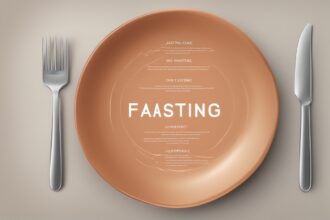Welcome to the ultimate guide on the types of fasting! Whether you’re a beginner curious about fasting or a seasoned practitioner looking to deepen your understanding, this post will walk you through the most popular fasting methods, their benefits, and how to implement them safely. Fasting, a practice rooted in ancient traditions, has gained massive popularity in recent years for its potential to improve health, boost mental clarity, and even aid in weight management. With science now backing many of these claims, it’s no wonder people are eager to explore different fasting methods. In this comprehensive 1,800–2,000-word journey, we’ll break down the key approaches, share actionable tips, and dive into credible research behind fasting. Let’s embark on this enlightening path together!
What Is Fasting and Why Does It Matter?
Fasting is the voluntary abstinence from food and, in some cases, drink for a specific period. While often associated with religious or spiritual practices, modern fasting is largely driven by health and wellness goals. The types of fasting vary widely, from short daily fasts to extended periods without food. Research suggests that fasting can trigger autophagy—a cellular cleanup process—and improve metabolic health by enhancing insulin sensitivity (Mattson et al., 2017). But why does fasting matter? Beyond weight loss, it’s linked to reduced inflammation, better brain function, and even potential longevity benefits (Longo & Mattson, 2014). Understanding the different fasting techniques allows you to choose one that aligns with your lifestyle and health objectives.
The concept of fasting isn’t new—it dates back thousands of years across cultures and religions. However, the resurgence of interest in fasting styles is largely due to emerging scientific evidence supporting its impact on the body and mind. When we fast, our bodies shift from using glucose as the primary energy source to burning stored fat, a state known as ketosis. This metabolic switch can lead to numerous health benefits, including improved blood sugar regulation and reduced oxidative stress. Fasting also gives the digestive system a break, potentially aiding gut health. With so many fasting approaches, there’s something for everyone, whether you’re looking to reset your metabolism or enhance mental focus. Let’s dive deeper into the most common methods to help you find the right fit.
Intermittent Fasting: The Most Popular Approach
Intermittent fasting (IF) tops the list of types of fasting due to its flexibility and accessibility. Unlike traditional diets, IF focuses on when you eat rather than what you eat. It cycles between periods of eating and fasting, making it sustainable for many people. Common IF protocols include the 16/8 method (fast for 16 hours, eat during an 8-hour window) and the 5:2 method (eat normally for 5 days, restrict calories to 500–600 on 2 days). Studies show IF can aid weight loss, improve blood sugar control, and reduce markers of heart disease risk (Patterson & Sears, 2017). If you’re new to fasting styles, start with a 12/12 split to ease into it. Remember to stay hydrated and listen to your body—fasting shouldn’t feel like punishment!
One reason IF is so popular among fasting methods is its adaptability to various lifestyles. Whether you’re a busy professional or a stay-at-home parent, you can adjust the eating windows to suit your schedule. For instance, with the 16/8 method, you might skip breakfast and start eating at noon, finishing by 8 p.m. This approach not only simplifies meal planning but also helps curb late-night snacking, a common hurdle for many. Additionally, IF has been shown to support brain health by increasing levels of brain-derived neurotrophic factor (BDNF), a protein linked to learning and memory (Mattson et al., 2017). However, it’s important to ensure you’re consuming nutrient-dense foods during eating periods to avoid deficiencies. Let’s explore some specific IF protocols to give you a clearer picture of this versatile fasting style.
- 16/8 Method: Fast for 16 hours daily, eat within an 8-hour window (e.g., noon to 8 p.m.). This is ideal for beginners due to its simplicity.
- 5:2 Diet: Eat normally for 5 days, limit calories to 500–600 on 2 non-consecutive days. It’s great for those who prefer minimal disruption to their weekly routine.
- Eat-Stop-Eat: Incorporate one or two 24-hour fasts per week, resuming normal eating afterward. This suits individuals comfortable with longer fasting periods.
- Warrior Diet: Fast for 20 hours, eat one large meal during a 4-hour window, often at night. It mimics historical eating patterns of warriors and requires discipline.
Starting with intermittent fasting can be as simple as delaying your first meal of the day. Over time, as your body adjusts, you can experiment with longer fasting windows or more restrictive protocols. Always prioritize hydration—water, herbal teas, and black coffee are typically allowed during fasting periods. If you feel lightheaded or overly fatigued, it’s a sign to reassess your approach or consult a professional. Intermittent fasting is a powerful tool among fasting techniques, but it’s not a one-size-fits-all solution. Tailor it to your needs for the best results.
Extended Fasting: Taking It to the Next Level
For those comfortable with shorter fasts, extended fasting—lasting 24 hours or more—is another category among the types of fasting. This approach is often used for deeper detoxification or spiritual purposes, though it comes with greater risks if not done properly. Extended fasts can range from a full day to several days, sometimes even weeks under medical supervision. Research indicates that prolonged fasting may enhance fat burning and promote cellular repair through autophagy (Longo & Mattson, 2014). However, it’s not for everyone. If you’re considering this fasting method, consult a healthcare provider, especially if you have underlying conditions. Start small, ensure electrolyte balance, and break the fast gently with light foods like broth or fruit.
Extended fasting pushes the body into a deeper state of ketosis, where fat becomes the primary fuel source. This can lead to significant weight loss in a short period, but it’s crucial to distinguish between healthy fat loss and potential muscle loss. Prolonged fasting also triggers a surge in human growth hormone (HGH), which may support tissue repair and anti-aging effects. However, without proper preparation, extended fasts can lead to dehydration, fatigue, or nutrient imbalances. To mitigate risks, consider supplementing with electrolytes like sodium, potassium, and magnesium during the fast. Post-fast, reintroduce food slowly—start with easily digestible options to avoid shocking your system. Extended fasting is a potent but intense option among fasting practices, so approach it with caution and informed guidance.
Water Fasting and Juice Fasting: Liquid-Only Options
Among the more restrictive types of fasting are water fasting and juice fasting, both of which involve consuming only liquids. Water fasting means no food or caloric drinks—just water—for a set period, often 24–72 hours. It’s touted for rapid weight loss and detox benefits, though scientific evidence on detoxification remains limited and debated in the medical community. Juice fasting, on the other hand, allows fruit and vegetable juices, providing some nutrients while still resting the digestive system. Both can be intense, so they’re best for short durations and with preparation. If you’re exploring these fasting approaches, avoid sudden starts or stops—ease in and out with lighter meals to prevent digestive distress.
Water fasting is often seen as the most extreme of fasting methods because it provides zero calories, forcing the body to rely entirely on stored energy. While some anecdotal reports praise its clarity-boosting and rejuvenating effects, it’s critical to monitor for signs of weakness or dizziness. Juice fasting offers a slightly gentler alternative, as the sugars and micronutrients in juices can help sustain energy levels. However, the high sugar content in some juices may spike blood glucose, counteracting fasting benefits for some individuals. Both methods require mental preparation and a quiet schedule—don’t attempt them during high-stress or physically demanding periods. If you’re new to liquid fasts, limit them to 1–3 days and consult a healthcare provider to ensure safety. These fasting styles can be transformative when done mindfully, but they’re not without challenges.
Religious and Cultural Fasting: Tradition Meets Health
Fasting isn’t just a health trend; it’s deeply embedded in many cultures and religions, making it a unique entry in the types of fasting. For example, Ramadan involves fasting from dawn to sunset for a month in the Islamic tradition, while Christian Lent often includes partial fasts or giving up specific foods. In Hinduism, fasting on specific days or for festivals is common. These fasting practices often combine spiritual discipline with physical benefits like improved mindfulness and reduced overeating. If you participate in cultural fasting, balance is key—ensure adequate hydration and nourishment during non-fasting hours to maintain energy and health.
Religious fasting often carries profound personal and communal significance, fostering a sense of connection and purpose beyond mere physical health. For instance, during Ramadan, the daily cycle of fasting and feasting encourages self-control and gratitude. Similarly, Yom Kippur in Judaism emphasizes reflection and atonement through a 25-hour fast. While the health benefits of such fasts align with other fasting techniques—like improved insulin sensitivity or caloric reduction—the primary motivation is often spiritual. Modern science acknowledges that these practices can enhance mental well-being by reducing stress and promoting mindfulness (Patterson & Sears, 2017). However, individuals with health conditions should adapt these fasts under guidance to avoid adverse effects. Below are some prominent examples of cultural and religious fasting traditions.
- Ramadan Fasting: Abstain from food and drink from sunrise to sunset for 30 days, focusing on spiritual growth and community.
- Lent Fasting: Partial fasts or abstaining from certain foods for 40 days in Christian tradition, symbolizing sacrifice.
- Yom Kippur Fasting: A 25-hour fast in Judaism, focusing on atonement and reflection, often accompanied by prayer.
- Hindu Fasting: Often tied to specific days or deities, may involve abstaining from grains or all food as an act of devotion.
- Buddhist Fasting: Monks and practitioners may fast after midday as part of discipline, emphasizing simplicity and focus.
How to Choose the Right Fasting Method for You
With so many types of fasting to choose from, finding the right one can feel overwhelming. Start by assessing your goals—weight loss, mental clarity, spiritual growth, or metabolic health? Consider your lifestyle too; a busy schedule might suit intermittent fasting better than a multi-day water fast. Health status matters as well—pregnant individuals, those with diabetes, or anyone on medication should consult a doctor before starting any fasting regimen. Here are a few practical tips: begin with shorter fasts, track how your body responds, and prioritize nutrient-dense meals during eating windows. Fasting is personal, so experiment with different fasting techniques to see what feels sustainable.
Beyond goals and lifestyle, it’s worth considering your mental readiness for fasting. Some methods, like extended or water fasting, require significant willpower and preparation, while others, like the 16/8 method of intermittent fasting, can seamlessly blend into daily life. Keep a journal to note energy levels, hunger cues, and mood changes during your fasting journey—this data can help refine your approach. Additionally, don’t overlook the importance of community or support systems. Joining online forums or discussing with friends who fast can provide motivation and practical advice. Remember that fasting isn’t about deprivation; it’s about intentionality. Whether you’re drawn to fasting styles for health, spirituality, or curiosity, the key is to start slow and stay informed.
Let’s wrap up this deep dive into the types of fasting with a final thought. Fasting isn’t a one-size-fits-all solution, but it offers a powerful tool for enhancing health and mindfulness when done thoughtfully. From intermittent fasting to cultural practices, each method has unique benefits and challenges. The key is to approach fasting with intention, informed by science and tailored to your needs. Whether you’re aiming to reset your metabolism, shed a few pounds, or connect spiritually, there’s likely a fasting style for you. Start small, stay hydrated, and don’t hesitate to seek guidance from a healthcare professional. Which fasting method are you excited to try? Let us know in the comments, and let’s keep the conversation going!
References
- Longo, V. D., & Mattson, M. P. (2014). Fasting: Molecular mechanisms and clinical applications. Cell Metabolism, 19(2), 181–192. https://doi.org/10.1016/j.cmet.2013.12.008
- Mattson, M. P., Longo, V. D., & Harvie, M. (2017). Impact of intermittent fasting on health and disease processes. Ageing Research Reviews, 39, 46–58. https://doi.org/10.1016/j.arr.2016.10.005
- Patterson, R. E., & Sears, D. D. (2017). Metabolic effects of intermittent fasting. Annual Review of Nutrition, 37, 371–393. https://doi.org/10.1146/annurev-nutr-071816-064634






